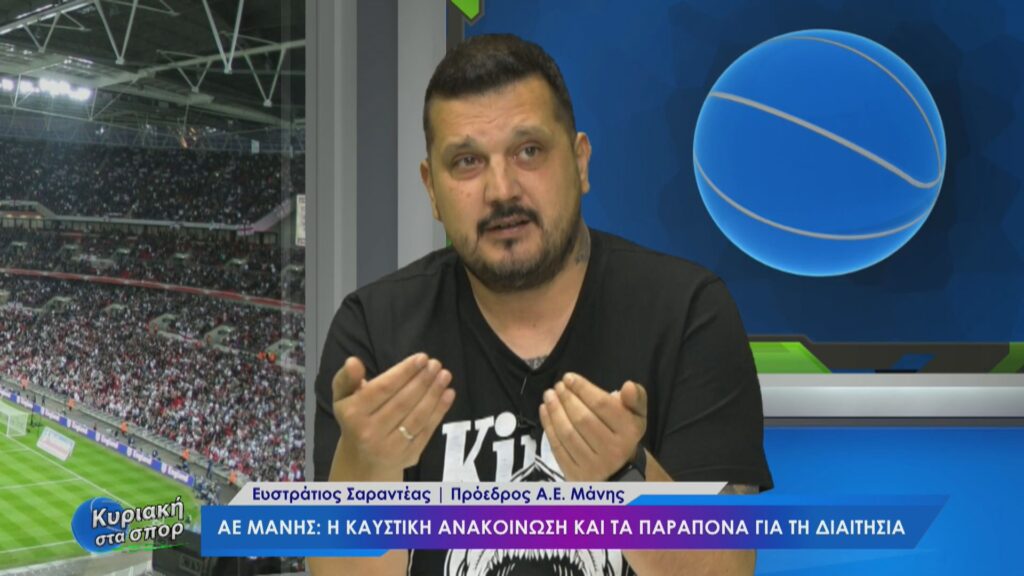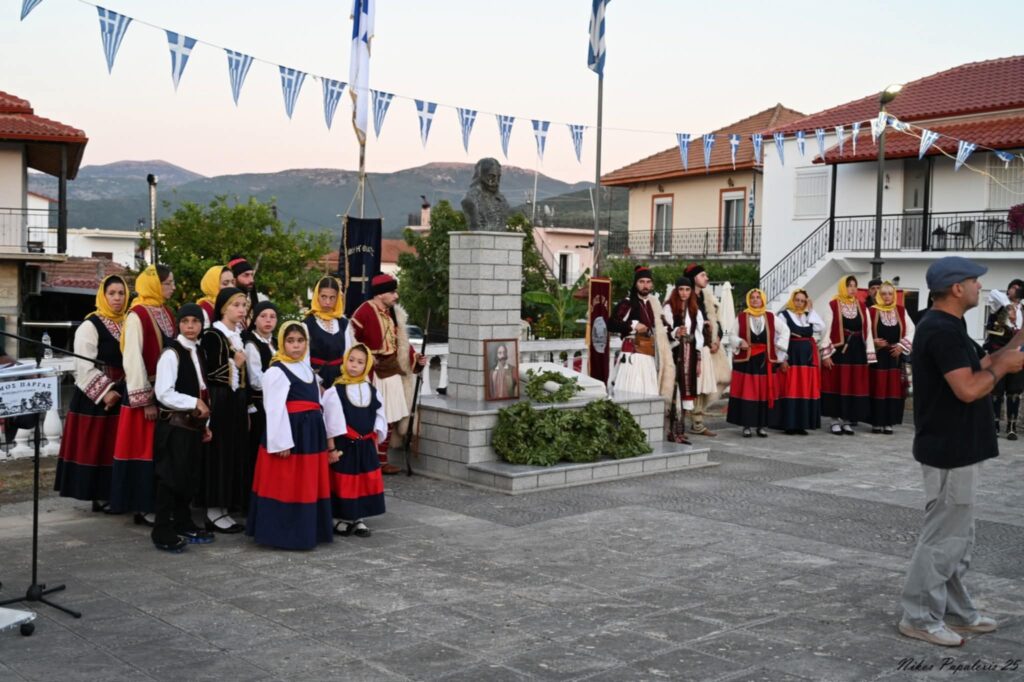Του Νικ. Ε. Μαραμπέα, Σχολικού Συμβούλου Φυσικών*.
Η πορεία προς τη διαμόρφωση των επιστημονικών πεδίων των Φυσικών Επιστημών είναι μακρά και επίπονη. Ταυτίζεται σχεδόν με την ίδια την ιστορία της ανθρωπότητας και ακολουθεί περίπου της ίδιες διαδρομές. Μπορούμε όμως σχηματικά να προσδιορίσουμε χαρακτηριστικούς σταθμούς μέχρι την ωριμότητα, δηλαδή μέχρι την καθιέρωση υποβάθρου, ώστε να πάρουν τα χαρακτηριστικά αυτοτελούς επιστήμης. Την ίδια περίπου διαδρομή ακολουθεί και η διδασκαλία τους, είτε με άτυπη μορφή, δηλαδή ατομικά, είτε με συστηματική μορφή, δηλαδή σε σχολικά σχήματα.
Η Αρχαία Ελλάδα μπορεί να θεωρηθεί ως αφετηρία γι` αυτή τη σχηματοποίηση. Στις κατάλληλες πολιτικές συνθήκες που επικρατούσαν στην εποχή της το ανθρώπινο πνεύμα μεγιστοποιούσε τις δυνατότητες του και διατύπωνε, σε συζητήσεις και σε κείμενα, τις συλλήψεις του. Οι απαρχές των στοιχείων των φυσικών επιστημών διαμορφώνονται ως αποτελέσματα φιλοσοφικής παρατήρησης και προσέγγισης του φυσικού κόσμου. Τα αποσπάσματα αυτών των προσεγγίσεων που έφθασαν μέχρι της ημέρες μας καταμαρτυρούν τα υψηλά πνευματικά χαρακτηριστικά των συμμετεχόντων στη διαδικασία αυτή. Τα στοιχεία αυτών των παρατηρήσεων συστηματοποιούνταν με βάση την αυξημένη διαίσθηση και την ενόραση και διαμόρφωναν τους πρώτους κανόνες από την προσέγγιση του φυσικού κόσμου.
Η κοινωνική και πολιτική μετεξέλιξη στον Ευρωπαϊκό χώρο με τα διοικητικά μορφώματα που συνεπέφερε μετατόπισε το κέντρο βάρους της ανθρώπινης δραστηριότητας από τη φιλοσοφική σκέψη σε πεδία δημιουργίας πρακτικών αποτελεσμάτων. Μόνο στον όψιμο μεσαίωνα, στα μοναστήρια και στις αυλές φωτισμένων τοπικών ηγεμόνων, άρχισε να διαμορφώνεται η τάση για επαναπροσέγγιση των στοιχείων του αρχαίου ελληνικού πολιτισμού, μεταξύ των οποίων και τις απόψεις των φυσικών φιλοσόφων. Σ` αυτό το κλίμα, άρχισαν να κινούνται οι σύγχρονοι ερευνητές που, με την βελτίωση των εποπτικών μέσων, μπόρεσαν να επαναλαμβάνουν και να συστηματοποιούν τις παρατηρήσεις τους. Οι περιπτώσεις του Κοπέρνικου, του Κέπλερ, του Τύχο Μπράχε, του Κέπλερ, του Γαλιλαίου και του Νεύτωνα εντάσσονται στη χρονική προέκταση αυτού του ευνοϊκού κλίματος, με όλες τις αναστολές και τις πισωδρομήσεις που δημιουργούσε η τάση για γεωγραφική επέκταση και παραγωγή προϊόντων σε ένα συντηρητικό κοινωνικό και πολιτικό περιβάλλον. Όμως οι πειραματικές διατάξεις που διαμόρφωσαν για τη συστηματοποίηση και επαλήθευση των αρχικών τους παρατηρήσεων, με τελικό αποτέλεσμα τη διατύπωση των σχετικών νόμων, αποτελούν το πρώτο βήμα για τη δημιουργία των Φυσικών Επιστημών. Ο χαρακτήρας αυτής της νέας επιστήμης, και η αποκόλλησή της από την προϊστορία της, έγκειται ακριβώς σ` αυτά τα εννοιολογικά της εργαλεία: την παρατήρηση και το πείραμα, που θα την ακολουθούν σ` όλη την τόσο εκτεταμένη εξέλιξή της μέχρι τις ημέρες μας.
Η Γαλλική Επανάσταση και οι φιλελεύθερες ιδέες που εξέπεμψε διαμόρφωσαν το κατάλληλο κλίμα για τη διάδοση και επέκταση των φυσικών επιστημών. Κυρίως όμως, η πορεία τους προσδιορίστηκε από τις εφαρμογές τους που ικανοποιούσαν και ικανοποιούν τις ανάγκες του ανθρώπου. Εννοούμε το ευρύτατο πεδίο της τεχνολογίας, που είχε και εκείνη τεράστια ανάπτυξη μέχρι την εποχή μας. Αυτή η αχώριστη σχέση μεταξύ του περιεχομένου των φυσικών επιστημών και της χρήσης του για την ικανοποίηση των πρακτικών αναγκών του επαναφέρει στο προσκήνιο την ταυτολογία πειράματος και φυσικών επιστημών και διαμορφώνει την αναγκαιότητα της ένταξης της πειραματικής πτυχής στη διδασκαλία τους, απαραίτητο στοιχείο αφομοίωσης για την κατανόηση των φυσικών νόμων και των λειτουργιών της φύσης, αλλά και δεξιοτήτων αναγκαίων στο σύγχρονο άνθρωπο.
Φωτισμένοι ΄Ελληνες δάσκαλοι των φυσικών επιστημών, όπως ο Κωνσταντίνος Κούμας, ο Ιώσηπος Μοισιόδαξ, ο Βενιαμίν Λέσβιος, ο Δανιήλ Φιλιππίδης μετέφρασαν και δίδαξαν στοιχεία από τις φυσικές επιστήμες με βάση της νέες αντιλήψεις στα λίγα σχολεία της τουρκοκρατούμενης Ελλάδας. Οι νέες αντιλήψεις για την πειραματική βάση των φυσικών επιστημών που οριοθετούνται μετά την εποχή του Νεύτωνα, σύμφωνα με τους σοφούς αυτούς δασκάλους, προωθούνται με “την εξορία από την πειραματικήν φυσικήν πασών των ματαίων υποθέσεων”, λόγω “του συνδυασμού των πειραμάτων με τον ορθόν συλλογισμόν” και “την ερμηνεία των νόμων της φύσεως”.
Στο νεοελληνικό κράτος ετέθη ως πρώτη προτεραιότητα η καταπολέμηση του σχεδόν πλήρους αναλφαβητισμού. Γι` αυτό η διδασκαλία των Φυσικών Επιστημών προβάλλει δειλά στα σχολικά προγράμματα και στηρίζεται διδακτικά από δασκάλους με σπουδές στις φυσικές επιστήμες, μόλις πριν από ένα αιώνα. Με οδύνες εξάλλου προέκυψε η αποκόλληση της Φυσικομαθηματικής Σχολής από τα σπλάχνα της Φιλοσοφικής στο μοναδικό τότε στον τόπο μας Πανεπιστήμιο της Αθήνας. Και τα προγράμματα σπουδών για πολλά χρόνια είχαν σοβαρές επιδράσεις από αριστοτελικές αντιλήψεις. Η ίδρυση και λειτουργία πριν από 70 χρόνια του δεύτερου Πανεπιστήμιου στη Θεσσαλονίκη και ο διαχωρισμός των Φυσικομαθηματικών Σχολών σε επί μέρους τμήματα, απετέλεσαν σημαντικούς παράγοντες για τη στήριξη της διδασκαλίας των φυσικών επιστημών σύμφωνα με τους επιστημονικούς κανόνες.
Αυτή η οδυνηρή πορεία προς την πειραματική διδασκαλία των φυσικών επιστημών φαίνεται ότι οδεύει σε μια αίσια προοπτική. Ο εφοδιασμός, τα πρώτα μεταπολεμικά χρόνια, των τότε Πρακτικών Λυκείων με εποπτικά μέσα διδασκαλίας των φυσικών επιστημών, η εισαγωγή της διδασκαλίας του προγράμματος PSCC στις αρχές της προηγούμενης δεκαετίας, η θεσμοθέτηση των Εργαστηριακών Κέντρων Φυσικών Επιστημών (ΕΚΦΕ) σε κάθε Νομό, η συγγραφή των νέων βιβλίων για τις φυσικές επιστήμες με τη μορφή διδακτικών πακέτων που περιέχουν ως αναπόσπαστο τμήμα τους εργαστηριακούς οδηγούς, οι κατασκευαστικές παρεμβάσεις στα εργαστήρια των Λυκείων αρχικά και, ελπίζομε σύντομα και των Γυμνασίων, και ο εφοδιασμός τους με τα αναγκαία διδακτικά όργανα και υλικά, αποτελούν βήματα που μπορούν να στηρίξουν μια αισιόδοξη προοπτική.
Εμείς εδώ στη Λακωνία, και στη Μεσσηνία, επιχειρούμε να δώσομε ένα μήνυμα: ότι ο ανθρώπινος παράγοντας δεν θα υστερήσει στη διαφαινόμενη θετική εξέλιξη για μια επαναπροσέγγιση στην πειραματική διδασκαλία των φυσικών επιστημών, όπως επιβάλλει η επιστημονική ιδιοσυστασία τους. Από το 1992 διανύομε μικρά και σταθερά βήματα προς αυτή την κατεύθυνση: α) Θεσπίσαμε, με έναρξη το 1993, ημερήσιες ή διήμερες επιμορφωτικές συναντήσεις κοντά στο χρόνο λήξης του διδακτικού έτους, αντίστοιχες με την παρούσα. Οι συναντήσεις αυτές συστηματοποιήθηκαν με σύνταξη και υλοποίηση σχετικών εξακτινωμένων προγραμμάτων στα πλαίσια του ΠΕΚ Τριπόλεως, β) πήραμε απάνω μας το θέμα των κτιριακών μετασκευών και των εξοπλισμών των ΕΚΦΕ Μεσσηνίας και Λακωνίας, που λειτουργούν ήδη 5 – 8 χρόνια και αποτελούν χώρους έντονης δραστηριότητας για όλα τα θέματα των φυσικών επιστημών, γ) συνεργαστήκαμε αρμονικά με τους καθηγητές του προωθούν τις δράσεις των ΕΚΦΕ και προσεγγίσαμε, σε μεγάλο βαθμό και στην ουσία τους, τους σκοπούς τους, διαμορφώνοντας υψηλού επιπέδου τεχνογνωσία, δ) είχαμε ιδιαίτερα καλές σχέσεις με όλους τους τοπικούς παράγοντες των Νομών και των περιοχών τους και υποβοηθηθήκαμε στη διαμόρφωση συνθηκών πλήρους επάρκειας στην υλικοτεχνική υποδομή των ΕΚΦΕ και ε) διαμορφώσαμε επιμορφωτική ζώνη για εργαστηριακή διδασκαλία των φυσικών επιστημών (Τρίτες για τη Μεσσηνία και Τετάρτες για τη Λακωνία, ώρες 11.30 έως 14.00), από 5ετίας ήδη, που το τρέχον σχολικό έτος, λόγω και της φυσικής ωριμότητας και εμπειρίας που έχει ήδη προκύψει, έχει αποκτήσει τη μέγιστη ανάπτυξη με 30 συναντήσεις κάθε διδακτικό έτος. ΄Υστερα από συνεργασία με τους σχολικούς συμβούλους των δασκάλων διαμορφώνομε προγράμματα επιμόρφωσης για όσους διδάσκουν φυσικές επιστήμες στο Δημοτικό Σχολείο, προσπαθώντας έτσι να κάνομε παρεμβάσεις στην αφετηρία του Ενιαίου Πλαισίου Προγράμματος Σπουδών για τις επιστήμες μας.
Ευελπιστούμε ότι στη νέα περίοδο που ανοίγει με την έγκριση του 2ου Ειδικού Επιχειρησιακού Προγράμματος για δράσεις στην εκπαίδευση, και λόγω του υψηλού προϋπολογισμού του, θα συντονιστούν και θα προωθηθούν οι διαδικασίες για την πειραματική διδασκαλία των φυσικών επιστημών στην εκπαίδευση, που αποτελεί απαραίτητη προϋπόθεση για την προώθηση υψηλού επιπέδου πανεπιστημιακών σπουδών στις φυσικές επιστήμες και την τεχνολογία.
* Εισαγωγική εισήγηση στην ημερίδα με τίτλο: Η διδασκαλία των Φυσικών Επιστημών, που διεξήχθη στη Σκάλα Λακωνίας, στις 30.03.2001.











